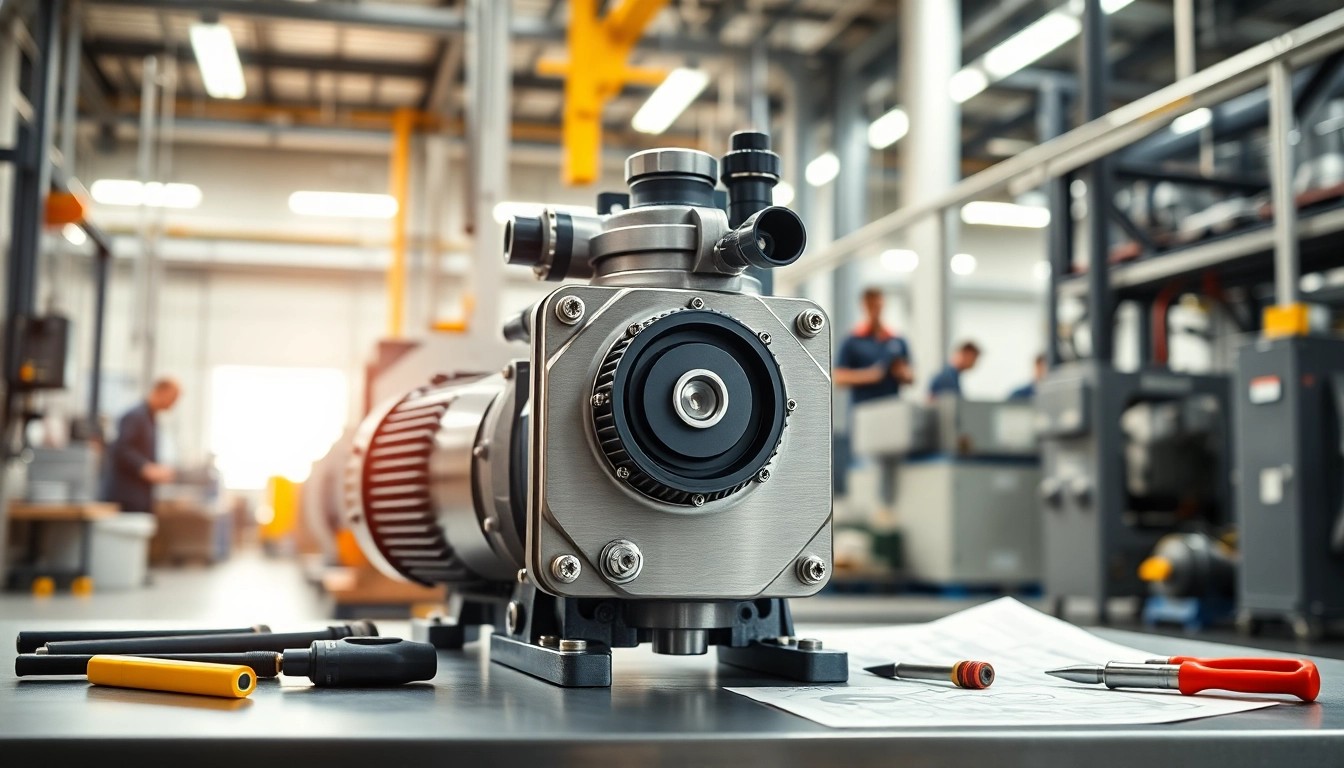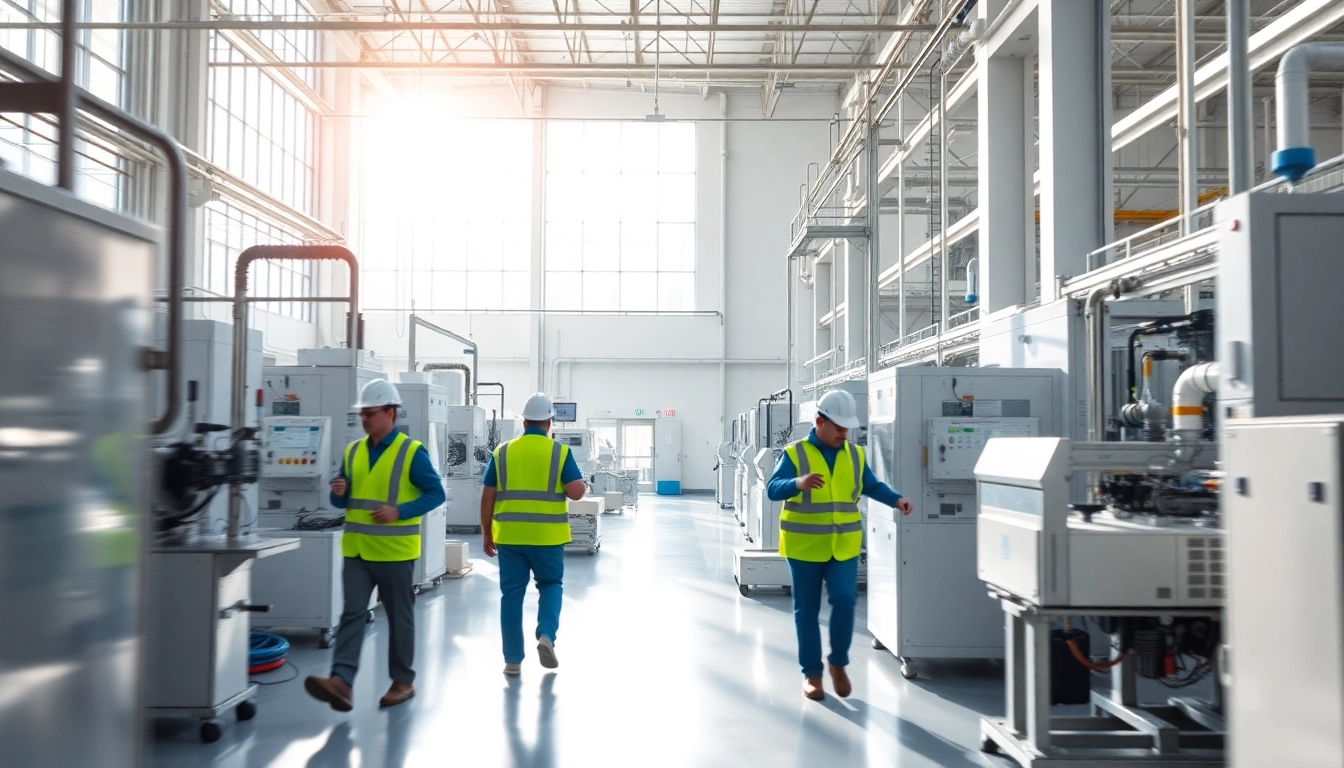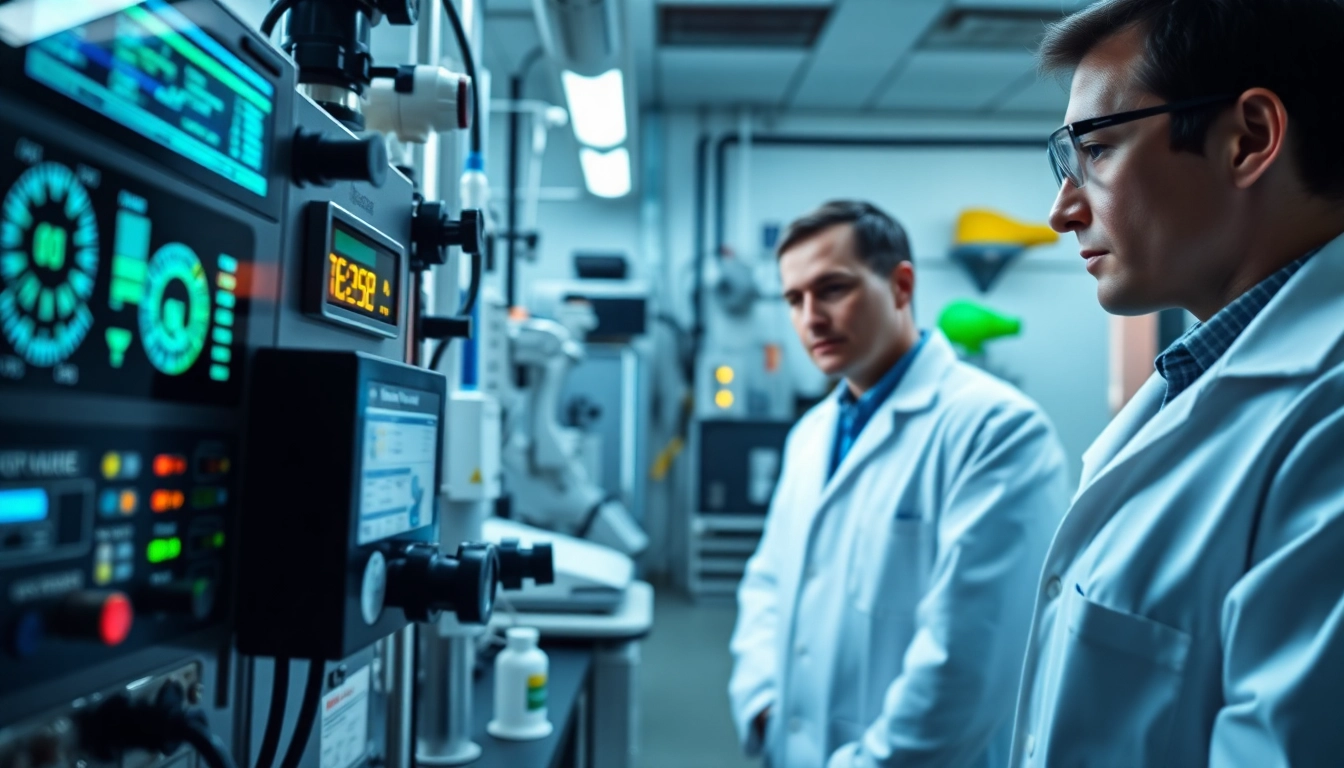What is Machine Vision?
Machine vision is a field of technology that utilizes imaging systems to enable machines and computers to interpret visual information from the world around them. It typically involves cameras and software algorithms that process visual data to make decisions or carry out actions in various applications. The rise of machine vision has transformed sectors like manufacturing, healthcare, and autonomous transport, thereby enhancing efficiency, accuracy, and process automation. For a deeper exploration of machine vision, refer to this machine vision resource.
Definition and Core Principles
The concept of machine vision encompasses several critical principles that guide its functionality. Primarily, it involves the acquisition, processing, and analysis of visual data used for automation and decision-making. Core principles include:
- Image Acquisition: This is the first step where images are captured using cameras and sensors. The quality and clarity of these images are pivotal for the subsequent analysis.
- Image Processing: The captured images are processed through various algorithms to enhance features that need to be analyzed, such as edges, colors, and textures.
- Decision Making: Based on the processed image data, algorithms make informed decisions or trigger automated responses to perform desired tasks.
How Machine Vision Works
Machine vision systems consist of several interconnected components that work in unison:
- Cameras: Devices that capture images or video of products or environments.
- Lighting: Proper lighting setups are crucial to illuminate the subject adequately for the camera.
- Processing Software: Algorithms analyze the visual data, often integrating artificial intelligence and machine learning to improve accuracy and comprehensiveness.
- Output Mechanisms: These handle the results of the analysis, which could include signals to machinery or results logged for human review.
Key Components of Machine Vision Systems
Successful implementation of machine vision hinges on multiple components, which can vary based on the specific application:
- Imaging Sensors: High-resolution cameras capable of capturing images at varying frame rates and lighting conditions.
- Optical Systems: Lenses and filters that direct and tailor light as it enters the camera, affecting image quality.
- Computing Hardware: Robust processors or GPUs that perform complex calculations in real time.
- Software Tools: Both generic and specialized software that can undertake image processing tasks, often featuring machine learning capabilities for advanced analysis.
Applications of Machine Vision
Machine vision technology is deployed across diverse industries, reflecting its versatility and efficiency:
Industrial Automation and Quality Control
In manufacturing environments, machine vision plays a crucial role in quality assurance and process optimization. Automated inspection systems can assess product quality in real-time, identifying defects and ensuring compliance with standards. Applications include:
- Defect Detection: Automated visual inspections can detect imperfections such as cracks, scratches, or incorrect dimensions.
- Barcode and QR Code Scanning: High-speed scanning systems ensure efficient tracking of inventory and workflow management.
- Assembly Line Guidance: Vision-guided robotics can assist in complex assembly tasks, ensuring parts are correctly assembled in real time.
Medical Imaging and Diagnostics
Machine vision is also integral to healthcare technology, particularly in diagnostic imaging. Advanced machine vision algorithms assist in interpreting medical images, thereby improving diagnostic accuracy:
- Radiology: Machine vision tools help radiologists in interpreting X-rays, MRIs, and CT scans, enhancing image quality and highlighting anomalies.
- Microscopy: Automated systems can analyze microscopic images of samples, which is crucial in biological and chemical research.
- Patient Monitoring: Machine vision systems monitor vital signs and patient conditions in real time, improving overall care quality.
Machine Vision in Autonomous Vehicles
Autonomous vehicles rely heavily on machine vision for navigation and safety. The integration of advanced vision systems allows cars to perceive their environment effectively, making split-second decisions:
- Object Recognition: Understanding road conditions, detecting pedestrians, and identifying obstacles to ensure safe navigation.
- Lane Detection: Analyzing lane markings to facilitate accurate lane-keeping strategies.
- Traffic Sign Recognition: Interpreting traffic signals and signs to adhere to road rules autonomously.
Machine Vision vs. Computer Vision
While often used interchangeably, machine vision and computer vision represent distinct technologies. Understanding their differences can help companies leverage them effectively:
Understanding the Differences
Machine vision focuses on the automation of specific industrial tasks, like quality assurance and robotic guidance, while computer vision is a broader domain encompassing the understanding and interpretation of visual data, including applications in non-industrial fields like healthcare and security.
Common Use Cases for Each
Machine vision is typically deployed for:
- Automated inspections in manufacturing.
- Robotic guidance in assembly lines.
- Barcode scanning and other industrial applications.
Conversely, computer vision applications include:
- Facial recognition in security systems.
- Image classification in social media.
- Healthcare diagnostics and smart home technologies.
Integrating Machine Vision with AI
The convergence of machine vision with artificial intelligence yields significant enhancements, allowing systems to learn from data and optimize operations autonomously. AI-powered machine vision can:
- Adapt to varying conditions, improving accuracy and response times.
- Enhance defect detection, reducing false positives.
- Automate data analysis, providing insights and recommendations for operational efficiencies.
Challenges in Machine Vision Implementation
While the benefits of machine vision are substantial, several challenges can arise during its implementation:
Technological Constraints
Technological challenges include:
- Image Quality: Ensuring high-resolution images in varying conditions, including changes in lighting and environment.
- Processing Power: The need for robust computing capabilities to handle complex algorithms in real time.
- Integration: Designing compatible systems that work cohesively with existing machinery and software.
Cost and ROI Considerations
Investing in machine vision systems can be substantial. Companies must evaluate:
- The initial capital expenditure versus long-term savings in labor and error reduction.
- The expected return on investment based on increased throughput and enhanced quality control.
- The potential for reduced downtime due to efficient operations.
Data Management and Processing Issues
Managing the vast amounts of data generated by machine vision systems can be daunting:
- Storage Solutions: Implementing robust data storage solutions to handle large datasets efficiently.
- Data Privacy and Security: Ensuring compliance with regulations and protecting sensitive data.
- Real-Time Processing: Establishing capabilities for processing and interpreting data instantaneously as it arrives.
Future Trends in Machine Vision Technology
As machine vision technology continues to evolve, several trends herald exciting developments:
Advancements in Sensor and Imaging Technology
New advancements are enabling the development of ultra-high-definition cameras and sensors that can operate effectively in challenging environments. Innovations in multispectral imaging and 3D vision systems further enhance the ability to analyze complex objects and scenes.
Impact of Machine Learning on Machine Vision
Machine learning drives improvements in machine vision, allowing systems to learn from past data and continuously enhance their performance. This results in:
- Increased accuracy in defect detection and classification.
- Better adaptability to new or unseen conditions.
- Reduced reliance on human intervention and programming.
Predicted Market Growth and Opportunities
The global machine vision market is anticipated to grow rapidly, driven by advances in technology and an increasing adoption of automation across various sectors. Opportunities can be expected in:
- Emerging markets where automation is increasingly seen as a pathway to competitive advantage.
- Integration with other technologies such as IoT and AI for enhanced applications across industries.















Leave a Reply